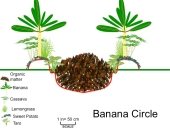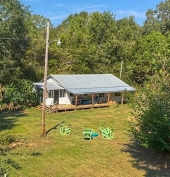








Iterations are fine, we don't have to be perfect
My 2nd Location:Florida HardinessZone:10 AHS:10 GDD:8500 Rainfall:2in/mth winter, 8in/mth summer, Soil:Sand pH8 Flat
 2
2




I make a Maple Syrup instructional movie! Check it out HERE
SKIP books, get 'em while they're hot!!! Skills to Inherit Property
See me in a movie building a massive wood staircase:Low Tech Lab Movie
 5
5




When you reach your lowest point, you are open to the greatest change.
-Avatar Aang
 3
3




'Theoretically this level of creeping Orwellian dynamics should ramp up our awareness, but what happens instead is that each alert becomes less and less effective because we're incredibly stupid.' - Jerry Holkins
 1
1




 1
1




Permaculture...picking the lock back to Eden since 1978.
Pics of my Forest Garden
 2
2




Greg Martin wrote:Travis, when you say forest products do you just mean lumber and firewood, which seem to be the lowest value products possible? The folks doing maple syrup and mushrooms seem to do pretty well and they get to protect the precious forests.
 3
3





 2
2




Fil Keller wrote:I'm a suburban tech worker with limited gardening experience (strawberries, tomatoes). I love the idea of food forests, and buying a large plot of land to experiment with different plants. The challenge I have is figuring out how much land is enough, assuming a person looks at farming not as food production but as an endless series of science experiments.
Sepp Holzer for example has 45 hectares (111 acres), so maybe that's the upper bound? I'm assuming that half the land will be used for forest, and the other half for pasture or annuals. How much can one person realistically manage assuming 4 hour days?
List of Bryant RedHawk's Epic Soil Series Threads We love visitors, that's why we live in a secluded cabin deep in the woods. "Buzzard's Roost (Asnikiye Heca) Farm." Promoting permaculture to save our planet.




Idle dreamer
 2
2




'Theoretically this level of creeping Orwellian dynamics should ramp up our awareness, but what happens instead is that each alert becomes less and less effective because we're incredibly stupid.' - Jerry Holkins
 1
1




 1
1




 2
2




 I had to use a wheelbarrow, 6-7 loads. which is no real fun.
I had to use a wheelbarrow, 6-7 loads. which is no real fun. 1
1




Mike Homest wrote:
If you indent to heat/hot water with wood you need lots of forest to allow it to regrow.
Idle dreamer
 2
2




Tyler Ludens wrote:
Mike Homest wrote:
If you indent to heat/hot water with wood you need lots of forest to allow it to regrow.
Or you could have a rocket mass heater and need 1/10 the amount of space for trees, which could be coppiced to provide wood of the exact right size for the heater.
 2
2




I make a Maple Syrup instructional movie! Check it out HERE
SKIP books, get 'em while they're hot!!! Skills to Inherit Property
See me in a movie building a massive wood staircase:Low Tech Lab Movie

|
keep an eye out for scorpions and black widows. But the tiny ads are safe.
The new gardening playing cards kickstarter is now live!
https://www.kickstarter.com/projects/paulwheaton/garden-cards
|







